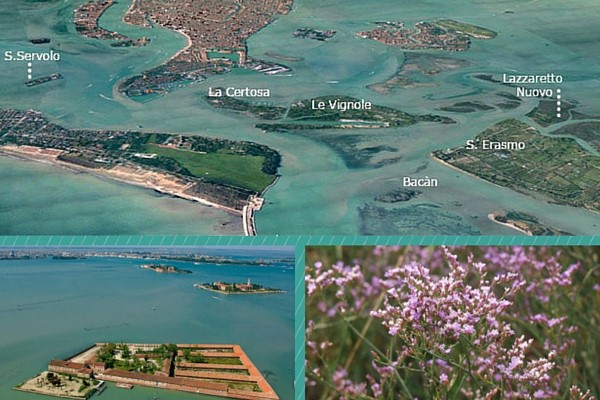The Venice Lagoon reveals, to those who want to look for them, the most incredible places, that for centuries have witnessed some of the most significant events in the history of the Serenissima. That is the case of the Lazaretti: two small islands where ships, with all their crew members and cargoes suspected of being infected with the plague, were detained before entering the city. In the island of Lazzaretto Nuovo (New), in the Northern Lagoon, people spent forty days in isolation (here is where the term quarantine was born) for a preventive purpose; in the Southern Lagoon, the island of Lazzaretto Vecchio (Old) was a real place of detention for those found to have plague. After the XVII century their aim was changed to military use during French and Austrian domination. Since the 1970’s they’ve been mostly abandoned. Now, thanks to various Venetian associations, the islands are open to the public again.
The island of Lazzaretto Vecchio
The lazaretto on the island of Santa Maria di Nazareth, near the Lido, was established by the Venetian Republic in 1423 as the first permanent plague hospital in the world. It seems that the term lazaretto, later adopted to indicate a hospital for patients infected with infectious disease, derives from the corruption of Nazaretum, the ancient name of the island. From April to October extraordinary public openings are organized on Sundays. Next special openings of the island of Lazzaretto Vecchio will take place on April 14th and May 12th. After the summer, the island opens to the public on Sunday 22 September and Sunday 6 October, reservations open in June. All the tours are in Italian. If you need another language, make sure to ask for it.
The island of Lazzaretto Nuovo
Every weekend until October 27 the island of Lazzaretto Nuovo can be visited with a two-hour guided tour. The tour includes a historical-archaeological path inside the perimeter walls and a nature walk, the trail of the saltmarshes, inaugurated just a week ago. It is an itinerary that allows you to observe the most precious lagoon environment, the saltmarshes, vegetated mud flats that are submerged by the very highest tides, today at risk of disappearing. The trail, about a kilometre, follows the old route of the sentinels, and climbs onto the nineteenth-century bastions, giving great views of the whole panorama of the lagoon.

